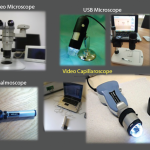Nailfold Capillaroscopy
The final speaker was Vanessa Smith, MD, PhD, associate professor of rheumatology and head of clinics, Ghent University Hospital, Belgium, who focused on the topic of nailfold capillaroscopy. At first glance, nailfold capillaroscopy and RA-ILD may not seem to fit together. However, the purpose of Dr. Smith’s talk was to remind the audience of how important the nailfold exam is in all patients with concern for ILD to identify scleroderma-spectrum diseases. In 1973, Maricq and LeRoy published a landmark study on the use of wide field microscopy to identify patterns of abnormal nailfold capillaries in patients with connective tissue diseases.8 Cutolo further expanded on this work in later years by employing 200x magnification techniques to look at nailfold capillaries in even greater detail. In 2020, Dr. Smith joined Dr. Cutolo and others in writing a consensus paper on nailfold capillaroscopy in patients with Raynaud’s and systemic sclerosis. In this paper, the authors were able to describe nailfold density, dimension, morphology and hemorrhage to create two categories: scleroderma pattern and non-scleroderma pattern.9
The fact that only patients with scleroderma-spectrum diseases should have a scleroderma pattern on nailfold capillaroscopy is helpful when evaluating for the underlying cause of a patient’s ILD. Dr. Smith provided a clinical example in which a patient presented with ILD in a nonspecific interstitial pneumonia (NSIP) pattern with concomitant inflammatory arthritis. The initial impulse of the treating provider was to label the patient as possibly having RA-ILD, but the nailfold capillaroscopy demonstrated a scleroderma pattern. Upon further evaluation, this patient was found to have antisynthetase syndrome as the cause of his disease. In a different case, a young woman was identified as having ILD in a UIP pattern and her lab studies showed a range of low titer antibodies in a confusing pattern. Her nailfold capillaroscopy was normal, and ultimately she was diagnosed as having a genetic cause for her ILD. The main message conveyed in these cases is that the absence or presence of scleroderma pattern nailfold capillaroscopy results can aid a great deal in finding the true etiology of ILD in each patient.
In Sum
The talk highlighted an unmet need: correctly identifying and treating patients with RA-ILD early in their disease course. Achieving success in this area is challenging, and a collaboration between rheumatologists and pulmonologists is important to improve the status quo and better patient care.
 Jason Liebowitz, MD, is an assistant professor of medicine in the Division of Rheumatology at Columbia University Vagelos College of Physicians and Surgeons, New York.
Jason Liebowitz, MD, is an assistant professor of medicine in the Division of Rheumatology at Columbia University Vagelos College of Physicians and Surgeons, New York.

